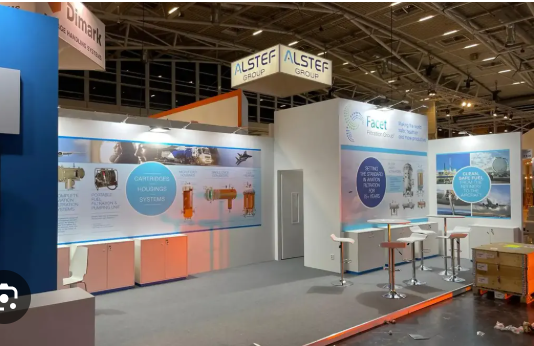Importance of a Well-Planned Booth
Exhibition Booth Design plays a crucial role in creating a lasting impression at trade shows and events. A well-planned booth not only showcases a company’s products and services but also attracts potential clients and partners. Event organisers need to focus on both aesthetics and functionality to ensure the booth effectively communicates the brand message.
Understanding the Target Audience
Before designing an exhibition booth, understanding the target audience is essential. Different industries and visitor types require distinct approaches in layout, color scheme, and engagement methods. Conducting research on attendee demographics helps tailor the design to appeal to the intended audience and increase interaction.
Layout and Space Management
An efficient layout ensures smooth traffic flow and encourages visitors to explore the booth. Dividing the space into sections for product display, demonstrations, and meetings creates an organized environment. Clear pathways, proper signage, and strategically placed focal points enhance visitor experience and prevent overcrowding.
Visual Branding and Theme
Consistency in visual branding reinforces the company identity. Selecting a color palette, typography, and graphics that reflect the brand’s personality ensures recognition. The booth theme should align with the company’s message while incorporating creative elements that make it stand out in a crowded exhibition hall.
Interactive Elements for Engagement
Incorporating interactive elements such as touchscreens, virtual reality, or live product demos makes the booth more engaging. Interactive experiences encourage visitors to spend more time at the booth and foster a better understanding of the products or services. This interaction often leads to higher conversion rates and stronger client relationships.
Lighting and Ambience
Proper lighting enhances both visibility and aesthetics. Highlighting key areas, such as product displays and promotional materials, draws attention and creates an inviting atmosphere. Using a combination of ambient, accent, and task lighting can effectively guide visitor attention throughout the booth.
Material Selection and Construction
The choice of materials impacts the booth’s durability, functionality, and overall impression. Lightweight and modular materials simplify setup and transport, while high-quality finishes convey professionalism. Considering sustainable materials also reflects environmental responsibility, which can resonate positively with attendees.
Staff Placement and Visitor Interaction
Strategic staff placement within the booth ensures efficient visitor engagement. Staff should be accessible but not intrusive, ready to answer questions and facilitate demonstrations. Training staff on product knowledge and communication skills enhances the overall visitor experience and strengthens the company’s reputation.
Budget Planning and Cost Management
Creating an exhibition booth involves balancing creativity with budget constraints. Planning for design, construction, transport, and installation ensures cost-effective management without compromising quality. Proper allocation of resources allows organisers to deliver a high-impact booth within financial limits.
Post-Event Analysis and Improvement
After the exhibition, analysing booth performance is vital for future improvements. Metrics such as visitor counts, lead generation, and engagement levels provide insights into the booth’s effectiveness. Feedback from attendees and staff can help refine design, layout, and interactive elements for upcoming events.
Conclusion
Exhibition booth design is an integral part of event marketing strategy. From planning and layout to branding, interactivity, and staff management, every aspect contributes to the booth’s success. Investing in thoughtful design ensures that the company captures attention, engages visitors, and achieves meaningful results at trade shows.

